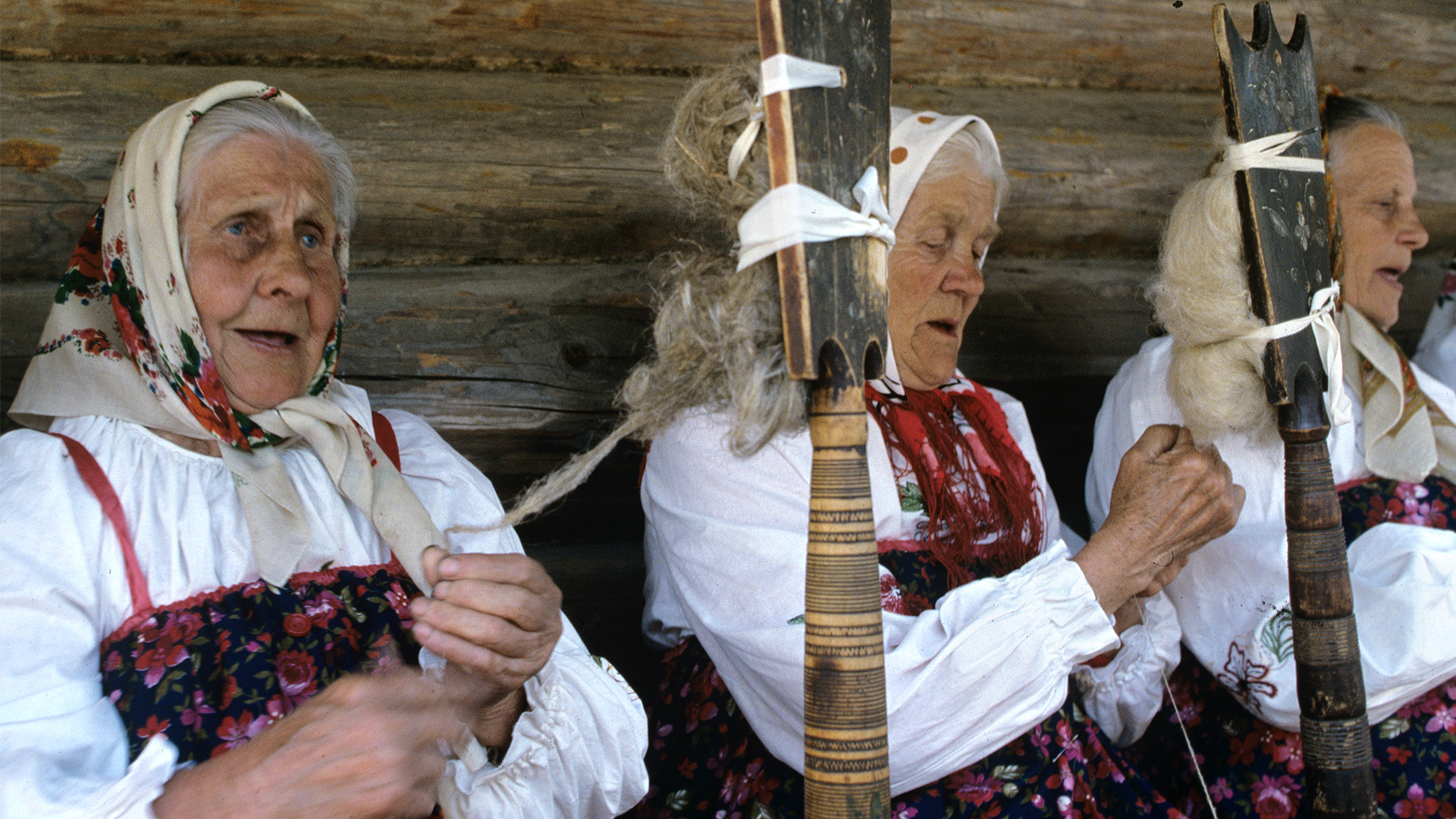
In terms of their shapes and décor, Russian distaffs (prialka) are unique even among other Slavic nations. Distaffs were used in Russia up until the 1930s. Researchers differ as to when exactly distaffs first appeared in Russia and when they began to be decorated: museums started collecting household items only in the 19th century. The oldest surviving distaff is in the collection of the All-Russian Decorative Art Museum, for example, and dates to the late 18th century.
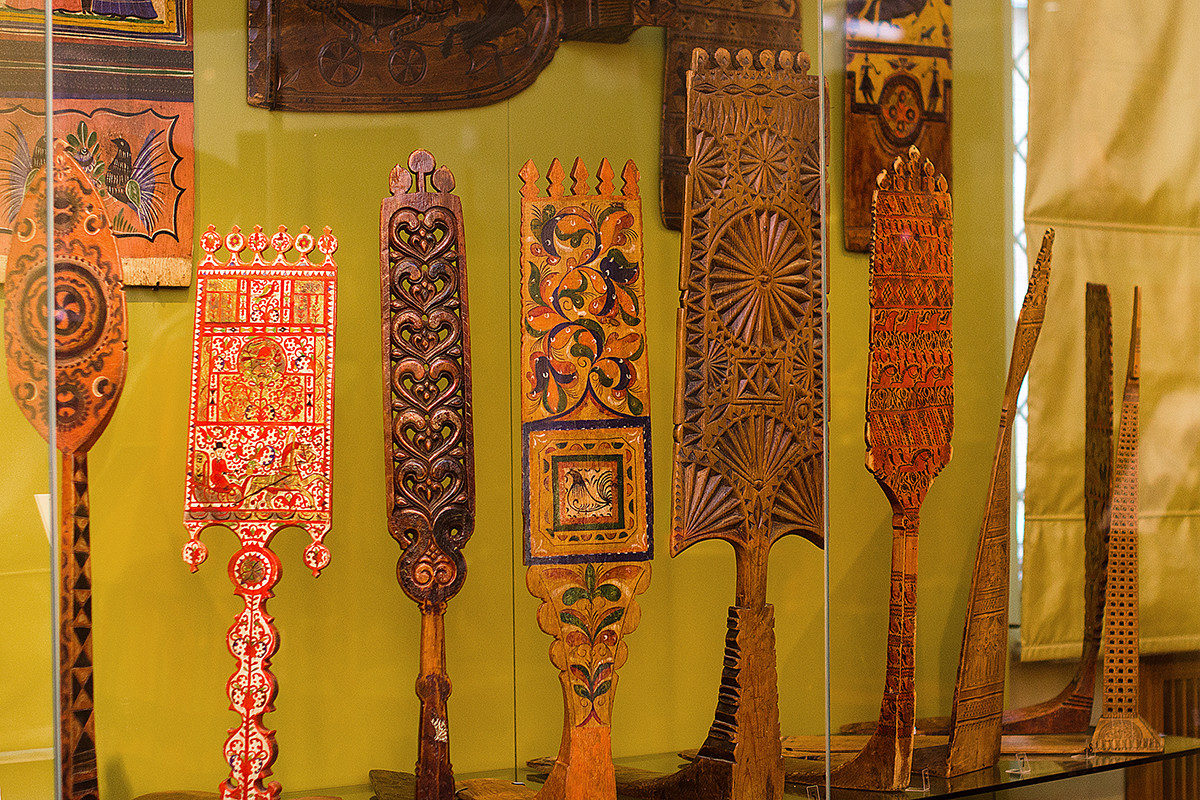
Different types of Russian distaffs from the collection of the All-Russian Decorative Art Museum
Elena Syomina/The All-Russian Decorative Art MuseumUsually, distaffs were made of a single solid piece of wood (spruce, aspen, birch and other hardwoods). The stump was used to make the horizontal base on which the spinner sat, and the trunk was used to make the column and the distaff’s blade, which were subsequently decorated. One-piece distaffs were widespread throughout the Russian North and Siberia.
In central Russia, especially along the banks of the Volga River, two-piece distaffs were more common. Instead of the blade, they had a comb, and their bases were decorated. After spinning, the distaff was taken apart and the base was hung on the wall as an ornament.
A girl usually got her first small distaff at the age of six. Russian women did their spinning from the end of November until the end of winter, while there was no field work to do. During that long period, while spinning they’d tell each other fairy tales and sometimes invite musicians to play for them.
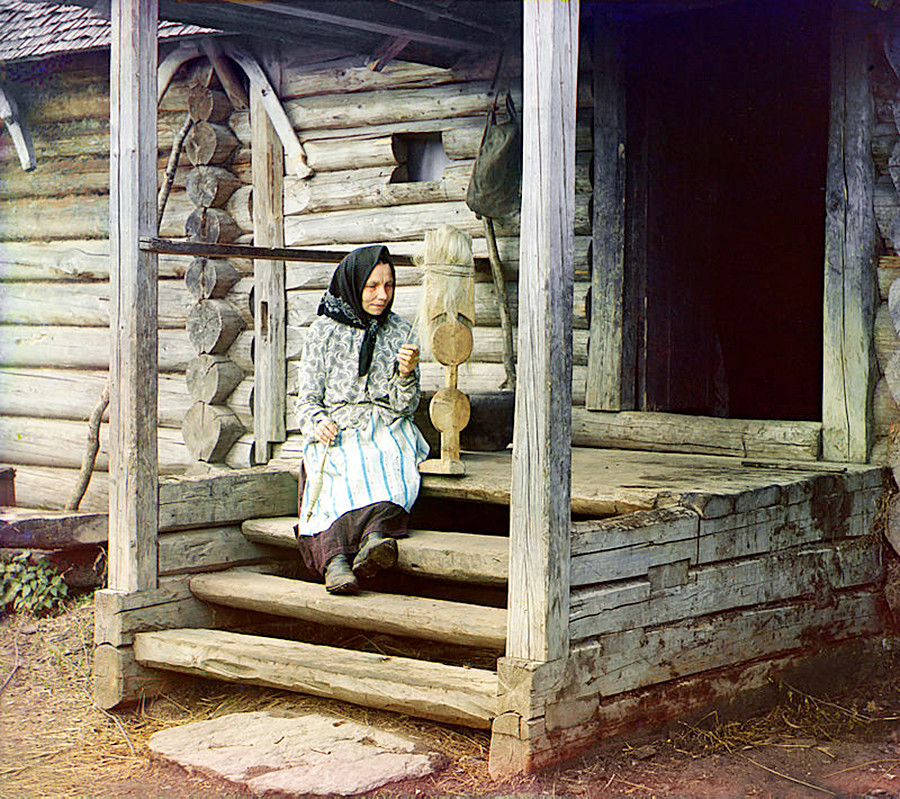
A lady sewing, 1910
Sergei Prokudin-GorskyYoung women often held special 'parties', to which they would come with their distaffs. There they could boast how beautifully painted theirs were. Young men from neighboring villages would come to these 'parties' in search of a bride. An expensive and richly decorated distaff could serve as an 'indicator' of a prospective bride's wealth.
Distaffs were sold at fairs and cost a lot of money (say, 5 rubles or more, which was the price of a new pair of leather shoes in the early 20th century). Parents bought a distaff for their daughter as a dowry, or it could be an expensive gift from the groom. Often, distaff blades carry signatures of the craftsmen who made them or inscriptions dedicated to someone special.
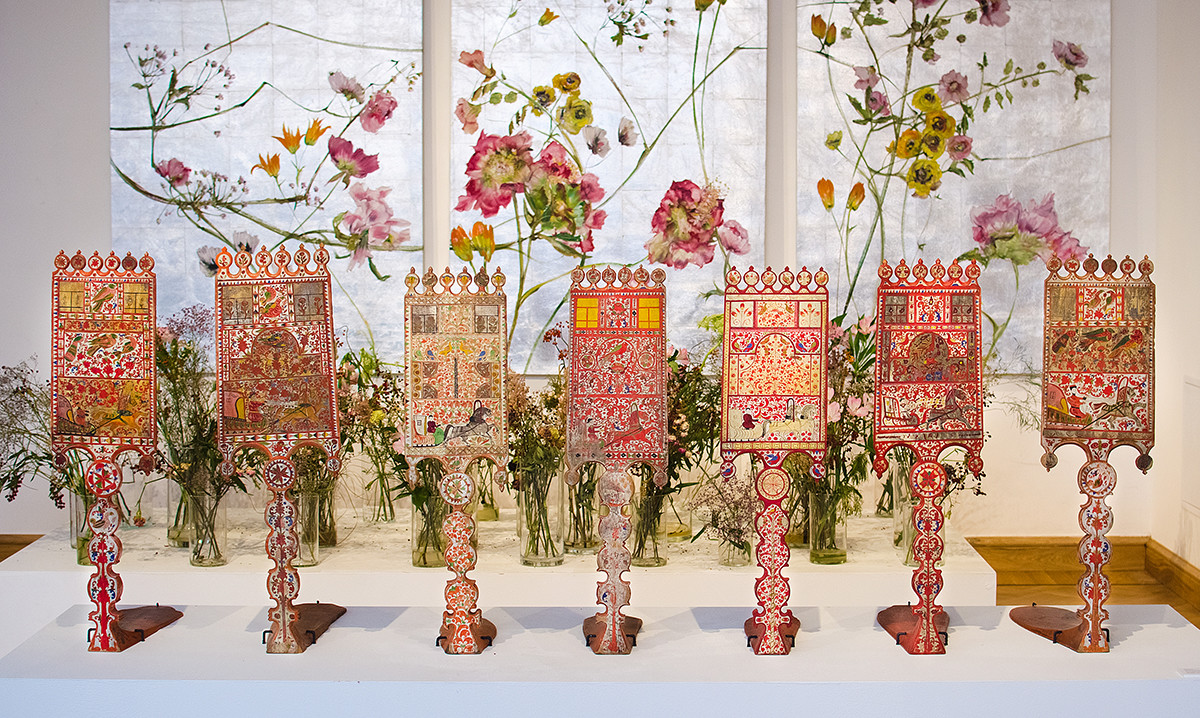
Distaffs decorated in Borok
Elena Syomina/The All-Russian Decorative Art MuseumThat is why distaffs, unlike other household items, were treated as legacy items and with much care. Also, this is why they are often well preserved (and can be found in many Russian museums).
Almost all distaffs that have survived to this day and form part of museum collections were decorated by professional craftsmen and come from specific locations known for their artistic traditions. These are the three best known location-specific artistic traditions:
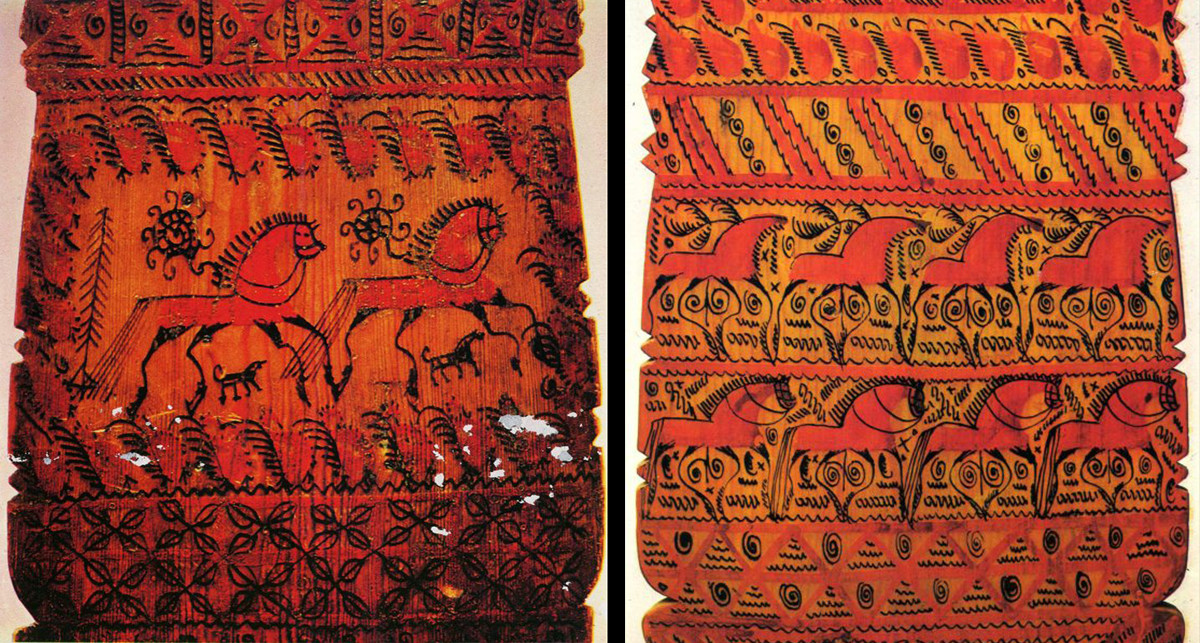
Distaffs from Mezen
ornamika.comIn the very north of Russia, on the Mezen River, the village of Palaschsherye is a place where craftsmen painted distaffs in the archaic style inspired by primitive rock paintings. Using soot and clay, they depicted running deer and other animals, as well as various geometric patterns.
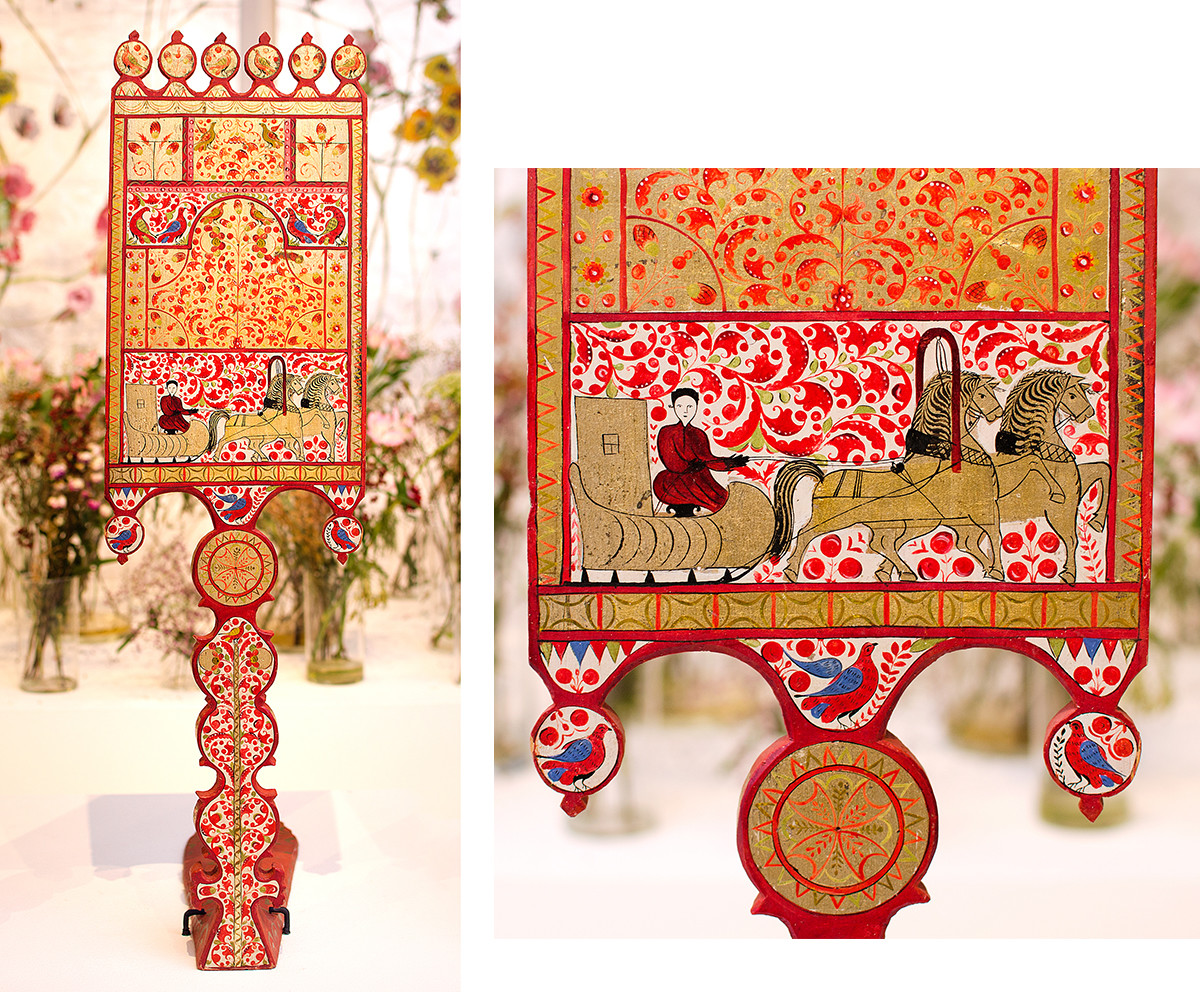
Borok distaff
Elena Syomina/The All-Russian Decorative Art MuseumAnother major center in the Russian north was the Northern Dvina River. The villages of Permogorye and Borok were home to entire dynasties of talented craftsmen. They often used gold leaf in their paintings, depicting floral ornaments, as well as the tree of life and birds of paradise. In addition, distaffs were often decorated with festive scenes and symbols, especially wedding carts.
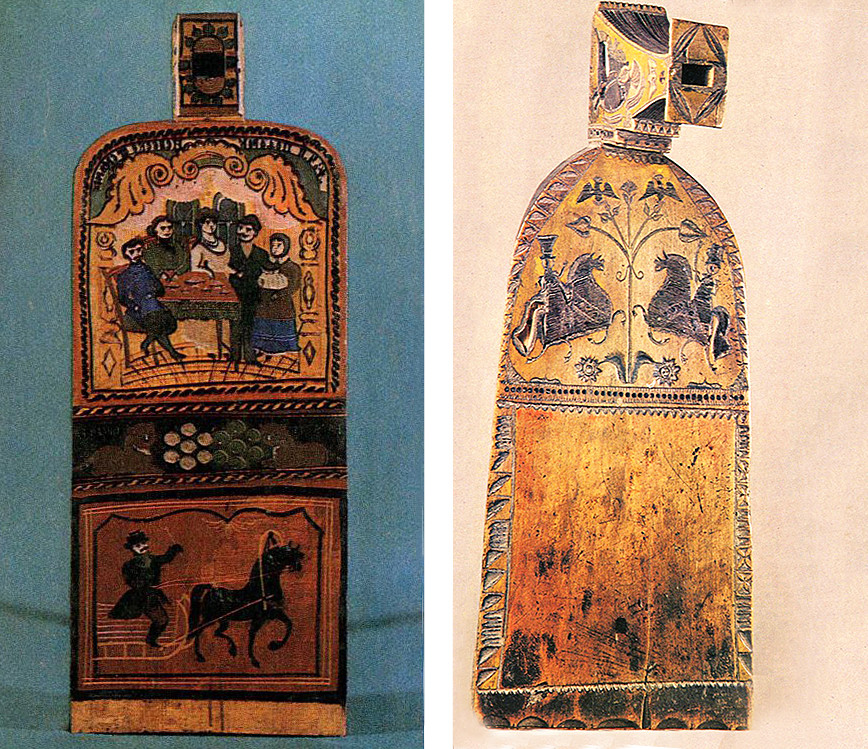
Gorodets style of carving (R) and painting
ornamika.comIn the village of Gorodets on the Volga River in the 18th century craftsmen began to decorate distaffs with carvings. For inlays they used bog oak, whose trunks had a long time been submerged in river water and acquired a beautiful black color.
Later, in the 19th century, local craftsmen switched to painting. Gorodets distaffs were considered very fashionable; unlike northern craftsmen, these masters preferred depicting modern scenes that featured carriages and dandies in city clothes.
Today, distaffs are back in fashion, but now they are appreciated as a unique object of art and interior décor: many modern designers create wall objects using folk art motifs.

Distaffs exhibition in ZIMA restaurant in London
Open Collection fundIn the 1990s, museums stopped sending expeditions to the Russian North: a sufficient number of exhibits had already been collected. However, private individuals continued to seek out handicraft items, including decorated distaffs.
Famous antique collectors from Moscow, Alexei and Ksenia Nikitin, purchased their first distaff in Vologda Region in 2004, and now they have about 1,000 items in their collection. They organize exhibitions of household items throughout Russia.
Russia Beyond would like to thank the All-Russian Decorative Art Museum, which boasts one of the largest and most unique collections of folk art in Russia, and in particular Natalya Denisova, an art historian, deputy head of the museum's Education Center, for their help in preparing this article.
If using any of Russia Beyond's content, partly or in full, always provide an active hyperlink to the original material.
Subscribe
to our newsletter!
Get the week's best stories straight to your inbox